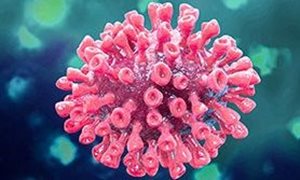
The cervicovaginal microbiome (CVM) is typically categorized into community state types (CSTs) according to the bacterial composition and diversity. In healthy cervical conditions, the CVM is generally abundant in Lactobacillus species. A change in this composition results in dysbiosis, which is associated with high-risk human papillomavirus (hrHPV) infections and cervical disease.
Assessing the impact of CSTs on cervical health is currently challenging because they have been mostly classified with amplicon-based sequencing technologies, which generally achieve genus-level resolution for microbiome annotation. Nonetheless, microbial species in the CVM can be detected through circular probes-based RNA sequencing (ciRNAseq). This technique specifically identifies bacterial species in cervical smears, thereby allowing the classification of CSTs and the study of the association of the CVM with hrHPV infections.
Aiming to investigate cervicovaginal CSTs and hrHPV infections, the group led by Willem Melchers, theme Women's cancers, and consisting of Mariano Molina, PhD candidate at the RIMLS, and Karolina Andralojc, theme Infectious diseases and global health, in collaboration with William Leenders from the Department of Biochemistry, and Martijn Huynen from the CMBI, applied the ciRNAseq technology to profile microbiomes in a large cohort of cervical smears from 541 women participating in the Dutch population-based cervical cancer screening program. The findings were recently published in the Nature partner journal (npj) Biofilms and Microbiomes, on September 28th.
They observed novel A and B subgroups of CSTs I, III, and IV, which correlated with the abundance of the bacterial species Lactobacillus acidophilus, Lactobacillus iners, Lactobacillus jensenii, and Megasphaera genomosp type 1. By comparing the prevalence of CSTs in hrHPV-positive women with low- or high-grade cervical lesions and hrHPV-negative and hrHPV-positive women without cervical abnormalities, they also found that CST V was associated with hrHPV-negative conditions and CST IV-A with hrHPV infection and cervical disease.
This study demonstrates the importance of microbial communities in women's cervical health and of high-resolution microbiome profiling in studying the relationship between CVM and hrHPV infections. They are currently analyzing the association of the CVM composition with hrHPV in longitudinal studies, aiming to elucidate viral carcinogenesis in women.
Publication
Molina, M.A., Andralojc, K.M., Huynen, M.A., Leenders, W.P.J, Melchers, W. J.G. In-depth insights into cervicovaginal microbial communities and hrHPV infections using high-resolution microbiome profiling. npj Biofilms Microbiomes 8, 75 (2022). https://pubmed.ncbi.nlm.nih.gov/36171433/
Related news items

Joint research in regional hospitals New research projects from promotion fund
22 November 2022Four research projects have been honored in the promotion fund of the Radboudumc and four regional hospitals. The research projects, which are a collaboration between CWZ, Jeroen Bosch Hospital, Rijnstate, Sint Maartenskliniek and the Radboudumc will receive a contribution of 240,000 euros.
go to page
Trained immunity’s role in kidney disease
17 November 2022Researcher(s) Jordi Ochando of the Icahn School of Medicine at Mount Sinai in New York and Raphaël Duivenvoorden of the Department of Nephrology at Radboudumc explain how trained immunity can have detrimental effects in kidney disease and transplantation.
go to page



